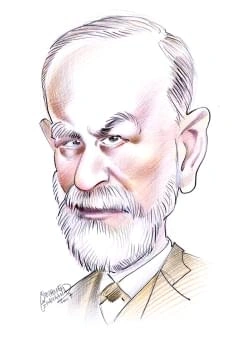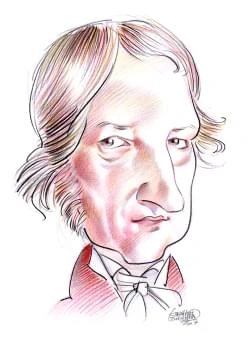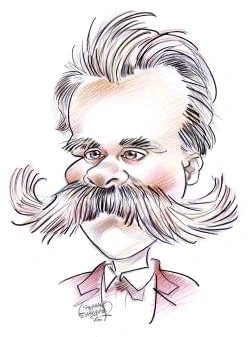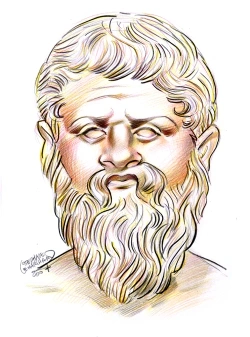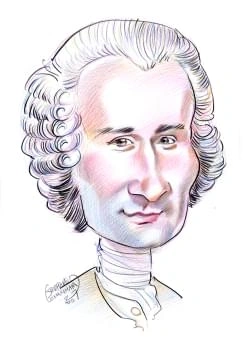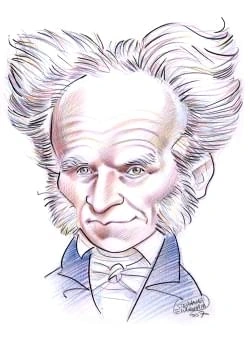199 résultats pour "ground"
-
Perception (psychology).
A4 Closure According to the law of closure, we prefer complete forms to incomplete forms. Thus, in the drawing below, we mentally close the gaps and perceive a picture of a duck. This tendency allows us to perceive whole objects from incomplete and imperfect forms. A5 Common Fate The law of common fate leads us to group together objects that move in the same direction. In the following illustration, imagine that three of the balls are moving in one direction, and two of the balls are mo...
-
Astronomy - astronomy.
Telescopes may use either lenses or mirrors to gather visible light, permitting direct observation or photographic recording of distant objects. Those that use lenses arecalled refracting telescopes, since they use the property of refraction, or bending, of light ( see Optics: Reflection and Refraction ). The largest refracting telescope is the 40-in (1-m) telescope at the Yerkes Observatory in Williams Bay, Wisconsin, founded in the late 19th century. Lenses bend different colors of light by d...
-
White House - geography.
Each Thanksgiving, the pardoning of the turkey takes place in the Rose Garden. This ceremony of rescuing a turkey and sending it to a petting zoo began during HarryTruman’s term, although Abraham Lincoln is said to have set a precedent by sparing his son’s pet turkey from the oven. III INSIDE THE WHITE HOUSE A large complex is needed for the many activities that take place at the White House. The White House has 132 rooms, 4 dining rooms, 35 bathrooms, 8 staircases, 3elevators, a clinic, a den...
-
Native American Architecture.
B Relationship to the Universe and Nature A more profound difference between European American and Native American perceptions lay in how human beings saw themselves in relationship to the universe andin what they believed their responsibilities were to the natural world and to each other. Most European Americans saw themselves as separate from creation andadversaries of nature, ever struggling to conquer and subdue nature and force it to yield to their will. Native Americans saw themselves as...
-
Weather.
hours, and the snow can be much deeper in places where the wind piles it up in drifts. Extraordinarily deep snows sometimes accumulate on the upwind side ofmountain slopes during severe winter storms or on the downwind shores of large lakes during outbreaks of polar air. VI WIND Wind is the horizontal movement of air. It is named for the direction from which it comes—for example, a north wind comes from the north. In most places near theground, the wind speed averages from 8 to 24 km/h (from 5...
-
Amphibian (animal) - biology.
strong enough to kill potential predators. C Hearing, Vision, and Vocalizations Amphibians rely on their senses to find food and evade predators. Amphibians lack external ears but have well-developed internal ears. Hearing is most acute in frogs,which typically have a middle ear cavity for transferring sound vibrations from the eardrum, or tympanum, to the inner ear. Frogs and toads also use their keen hearingin communicating with one another. Using a true voice box, or larynx, and a large, exp...
-
Mammal - biology.
On land, mammals live in many different habitats, and at a wide range of altitudes. Many mammals dig burrows as refuges or as places to raise their young, but somehave developed a largely subterranean lifestyle, feeding on small animals or plant roots beneath the soil's surface. These animals, including moles and mole-rats, digthrough the ground either with spadelike front paws or with their teeth, and they detect danger by being highly sensitive to vibrations transmitted through the soil.Most m...
-
Prints and Printmaking
I
INTRODUCTION
Prints and Printmaking, pictorial images that can be inked onto paper, and the art of creating and reproducing them.
Bewick’s The SkylarkBritish engraver Thomas Bewick’s The Skylark is part of his History of British Birds (2 vols., 1797 and 1804). Bewick wasthe first artist to demonstrate the full potential of wood engraving and is renowned for his fine natural history illustrations.Each illustration shows some of the bird’s natural habitat.Folio Society, London/Bridgeman Art Library, London/New York Historically, the wood engraving was chiefly used for illustrations in magazines and books. It is similar to th...
-
-
Persian Gulf War.
to “use all necessary means” to force Iraq from Kuwait if Iraq remained in the country after January 15, 1991. The Iraqis rejected the ultimatum. Soon after the vote,the United States agreed to a direct meeting between Secretary of State James Baker and Iraq’s foreign minister. The two sides met on January 9. Neither offered tocompromise. The United States underscored the ultimatum, and the Iraqis refused to comply with it, even threatening to attack Israel. For the United States, themeeting was...
-
Persian Gulf War - History.
to “use all necessary means” to force Iraq from Kuwait if Iraq remained in the country after January 15, 1991. The Iraqis rejected the ultimatum. Soon after the vote,the United States agreed to a direct meeting between Secretary of State James Baker and Iraq’s foreign minister. The two sides met on January 9. Neither offered tocompromise. The United States underscored the ultimatum, and the Iraqis refused to comply with it, even threatening to attack Israel. For the United States, themeeting was...
-
Persian Gulf War - U.
to “use all necessary means” to force Iraq from Kuwait if Iraq remained in the country after January 15, 1991. The Iraqis rejected the ultimatum. Soon after the vote,the United States agreed to a direct meeting between Secretary of State James Baker and Iraq’s foreign minister. The two sides met on January 9. Neither offered tocompromise. The United States underscored the ultimatum, and the Iraqis refused to comply with it, even threatening to attack Israel. For the United States, themeeting was...
-
Beetle - biology.
cut, or crush prey. Beetles that consume nectar from flowers use tubelike mouthparts to suck up nectar like a primitive straw. C Thorax The thorax, the body region behind the head, consists of three segments that provide attachments for the legs and wings. Each segment of the thorax carries a pair oflegs. The middle segment also bears the stiff wing sheaths called elytra, and the hind segment holds the membranous hind wings. D Legs Beetles have six jointed legs, each leg with five parts. The f...
-
Nunavut - Canadian History.
The Arctic Lands is a complex geological area that is centered on the Arctic Ocean. It includes coastal plains, plateaus, and mountains. Coastal plains and plateaus arefound in the western Northwest Territories section of the Arctic Lands, such as on Victoria Island, which is mostly a large, flat plateau. In striking contrast to theserelatively gentle landscapes, the eastern Nunavut section of the Arctic Lands is dominated by a jagged chain of ice-covered mountains. The mountains on EllesmereIsl...
-
Plant - biology.
B1 Vacuoles Vacuoles are membrane-bound cavities filled with cell sap, which is made up mostly of water containing various dissolved sugars, salts, and other chemicals. B2 Plastids Plastids are types of organelles, structures that carry out specialized functions in the cell. Three kinds of plastids are important here. Chloroplasts contain chlorophyllsand carotenoid pigments; they are the site of photosynthesis, the process in which light energy from the sun is fixed as chemical energy in the b...
-
Newfoundland and Labrador - Geography.
Precipitation averages about 1,120 mm (about 44 in) yearly in Newfoundland. In Labrador precipitation varies from about 1,020 mm (about 40 in) in the southeast toabout 510 mm (about 20 in) in the extreme north. Heavy winter snowfalls are common, especially in Newfoundland. D Plant Life About one-third of Newfoundland is forested, and most of the rest of the island is made up of barren areas of reindeer moss and lichens. The forests consist almostentirely of conifers. The most important species...
-
Newfoundland and Labrador - Canadian History.
Precipitation averages about 1,120 mm (about 44 in) yearly in Newfoundland. In Labrador precipitation varies from about 1,020 mm (about 40 in) in the southeast toabout 510 mm (about 20 in) in the extreme north. Heavy winter snowfalls are common, especially in Newfoundland. D Plant Life About one-third of Newfoundland is forested, and most of the rest of the island is made up of barren areas of reindeer moss and lichens. The forests consist almostentirely of conifers. The most important species...
-
-
White House - geography.
A large complex is needed for the many activities that take place at the White House. The White House has 132 rooms, 4 dining rooms, 35 bathrooms, 8 staircases, 3elevators, a clinic, a dentist’s office, a bowling alley, and a movie theater. About 150 people work in the White House offices, and another 100 people are needed to keepthe White House running. Congress provides funds to each first family to redecorate and refurnish the family quarters according to its wishes. The family quarters of th...
-
Whale - biology.
III BEHAVIOR OF WHALES Studies of whales in captivity have taught scientists much about the complex social behavior of whales. Since the late 1980s, advances in the use of satellite trackingsystems have also broadened opportunities for scientists to observe how whales behave in the wild. A Swimming and Diving Whales swim by making powerful up-and-down movements of the tail flukes, which provide thrust. The power comes from body muscles that flex the lower spine upand down in a wavelike motion...
-
Gemstones.
In the late 1960s a method was developed for “growing” diamonds by heating a diamond particle to a high temperature and subjecting it to methane gas. The gasdecomposes into carbon atoms, which adhere to the diamond crystal. The crystal structure of the enlarged diamond is identical to that of a natural diamond. Diamondsof about 1 carat (200 mg or 0.007 oz) have been produced by this method, but their cost is still considerably higher than that of naturally occurring diamonds. Sapphires are made...
-
God.
I
INTRODUCTION
God, the center and focus of religious faith, a holy
C Islam Islam arose as a powerful reaction against the ancient pagan cults of Arabia, and as a consequence it is the most starkly monotheistic of the three biblically rootedreligions. The name Allah means simply “the God.” He is personal, transcendent, and unique, and Muslims are forbidden to depict him in any creaturely form. The primary creed is that “There is no god but Allah, and Muhammad is the apostle of Allah.” Allah has seven basic attributes: life, knowledge, power, will, hearing, se...
-
Dinosaur - biology.
The behavior of dinosaurs was governed by their metabolism and by their central nervous system. The dinosaurs’ metabolism—the internal activities that supply thebody’s energy needs—affected their activity level. It is unclear whether dinosaurs were purely endothermic (warm-blooded), like modern mammals, or ectothermic (cold-blooded), like modern reptiles. Endotherms regulate their body temperature internally by means of their metabolism, rather than by using the temperature oftheir surroundin...
-
Electricity
I
INTRODUCTION
Electricity, one of the basic forms of energy.
electrons in the neutral object are attracted to the positive object. Some of these electrons flow to the side of the neutral object that is nearest to the positive object.This side of the neutral object accumulates electrons and becomes negatively charged. Because electrons leave the far side of the neutral object while its protonsremain stationary, that side becomes positively charged. Since the negatively charged side of the neutral object is closest to the positive object, the attraction bet...
-
Stone Age.
limestone, quartzite, and indurated shale. Ground stone tools could be made on a wider range of raw material types, including coarser grained rock such as granite. Flaking produces several different types of stone artifacts, which archaeologists look for at prehistoric sites. The parent pieces of rock from which chips have beendetached are called cores, and the chips that have been removed from cores are called flakes. A flake that has had yet smaller flakes removed from one or more edgesin orde...
-
Alaska - geography.
depression surrounded by highlands and have the coldest winter and hottest summer temperatures in Alaska. Once the Kuskokwim River passes through theKuskokwim Mountains, it forms the southern edge of a vast lake-studded alluvial plain bounded on the north by the Yukon River. This water-logged lowland is a majorsummer nesting area for birds. Fairbanks is the major city in this region, while Fort Yukon is the major community in the Yukon Flats and Bethel the largest settlementon the Lower Kuskokwi...
-
-
Alaska - USA History.
depression surrounded by highlands and have the coldest winter and hottest summer temperatures in Alaska. Once the Kuskokwim River passes through theKuskokwim Mountains, it forms the southern edge of a vast lake-studded alluvial plain bounded on the north by the Yukon River. This water-logged lowland is a majorsummer nesting area for birds. Fairbanks is the major city in this region, while Fort Yukon is the major community in the Yukon Flats and Bethel the largest settlementon the Lower Kuskokwi...
-
Football.
C Special Teams Each team has players who enter the game during special plays such as kickoffs, field goals, punts, and returns. The kicker kicks off at the beginning of a game or half,and after his team has scored. The kicker also scores points for the offensive team by kicking the ball through the goalpost’s vertical posts, also known as the uprights;these scores are called field goals. When the offensive team must surrender the ball to the opponents, a punter comes in to kick the ball downfi...
-
Soil.
I
INTRODUCTION
Soil, the loose material that covers the land surfaces of
an exchange between plants and the atmosphere, as oxygen diffuses into the soil and is used by roots for respiration. In turn, the resulting carbon dioxide diffusesthrough pore spaces and returns to the atmosphere. This exchange is most efficient in soils with a high degree of porosity. For farmers, gardeners, landscapers, andothers with a professional interest in soil health, the process of aeration—making holes in the soil surface to permit the exchange of air—is a crucial activity. Theburrowi...
-
Volcano.
before eruption. Very violent explosive eruptions are called Plinian eruptions, after Roman naturalist Pliny the Elder. These eruptions can last for several hours to daysand eject a large amount of pyroclastic material. Some volcanoes can produce much more energetic eruptions that eject materials farther from the vents because oftheir andesitic and dacitic composition. Andesitic and dacitic lava is generally thicker than basaltic lava. Stiff lava generally produces more-explosive eruptions. B No...
- Pour ou contre Mosquée sur le site de Ground Zero ( compte rendu d'un débat )
-
Monkeys.
Female monkeys usually give birth to only one baby at a time. The baby stays with its mother while itfeeds on her milk. In many species, the females stay with their mother’s family group for life. Malesoften leave their mother’s family group when they grow up. Compared to other animals, monkeys live a long time. It’s hard to know how long a monkey in the wildwill live. But some monkeys in zoos have lived to be more than 50 years old. WHAT DO MONKEYS EAT? What a monkey eats depends on the size of...
-
Giraffe - biology.
One of the most striking elements of giraffe behavior is the duel between males fighting for mating privileges. Giraffe duels are among the most extraordinary in theanimal kingdom. They start when two males approach each other and begin to rub and intertwine their necks. This behavior—known as necking—allows the opponentsto assess each other’s size and strength. Often, necking alone is enough to establish seniority. If not, the rivals begin to exchange blows with their heads. Each giraffebraces...
-
Gothic Art and Architecture
I
INTRODUCTION
Notre Dame Cathedral, Paris
Notre Dame Cathedral, in Paris, was begun in 1163 and completed for the most part in 1250.
and by external arches, called flying buttresses. Consequently, the thick walls of Romanesque architecture could be largely replaced by thinner walls with glass windows,and the interiors could reach unprecedented heights. A revolution in building techniques thus occurred. With the Gothic vault, a ground plan could take on a variety of shapes. The general plan of the cathedrals, however, consisting of a long three-aisled nave interceptedby a transept and followed by a shorter choir and sanctuary,...
-
-
Snake (reptile).
in their heads that conduct sound. They are able to hear low-frequency sounds and to sense vibrations that travel through the ground or water. The majority of snakeshave good eyesight, especially for detecting moving objects, although most burrowing snakes can only distinguish between light and dark. Pit vipers, boas, and pythons have an unusual adaptation for detecting warm-blooded prey and predators. On the heads of these snakes are small pits lined with cellsthat are extremely sensitive to he...
-
Ear.
I
INTRODUCTION
Ear, organ of hearing and balance. Only vertebrates, or animals
line or rotates in any direction. Each canal also contains sensory areas with sensory hair cells that project into a cone-shaped cap of gelatin. Two of the semicircularcanals are in a vertical position and are used to detect vertical movement, such as jumping or falling. The third canal is horizontal and detects horizontal movement,such as turning or spinning. The action of the canals depends on the inertia of the fluid inside. When the motion of the body changes, the fluid lags behind, causing...
-
Birding - biology.
swallows, and rock doves nest on buildings in cities, towns, and farms. The chimney swift has abandoned hollow trees for chimneys as a nest site in urban areas.Mallards and Canada geese—once exclusively wild, migratory species—now live year-round in the open spaces found in city parks and golf courses. Nearly all purplemartins, a songbird species that once used the abandoned nests of woodpeckers or the natural cavities of cliffs or dead trees, now live primarily in structures specificallyconstru...
-
Korean War.
During the summer of 1949, South Korea had expanded its army to about 90,000 troops, a strength the North matched in early 1950. The North had about 150 SovietT-34 tanks and a small but effective air force of 70 fighters and 62 light bombers—weapons either left behind when Soviet troops evacuated Korea or bought from theUSSR and China in 1949 and 1950. By June 1950 American data showed the two armies at about equal strength, with roughly equal numbers amassed along the 38thparallel. However, thi...
-
Korean War - History.
During the summer of 1949, South Korea had expanded its army to about 90,000 troops, a strength the North matched in early 1950. The North had about 150 SovietT-34 tanks and a small but effective air force of 70 fighters and 62 light bombers—weapons either left behind when Soviet troops evacuated Korea or bought from theUSSR and China in 1949 and 1950. By June 1950 American data showed the two armies at about equal strength, with roughly equal numbers amassed along the 38thparallel. However, thi...
-
Korean War - U.
During the summer of 1949, South Korea had expanded its army to about 90,000 troops, a strength the North matched in early 1950. The North had about 150 SovietT-34 tanks and a small but effective air force of 70 fighters and 62 light bombers—weapons either left behind when Soviet troops evacuated Korea or bought from theUSSR and China in 1949 and 1950. By June 1950 American data showed the two armies at about equal strength, with roughly equal numbers amassed along the 38thparallel. However, thi...
-
Arizona - geography.
of the Mogollon Rim, the Little Colorado draws very little water from a relatively large watershed, usually containing a mere trickle of water in its riverbed. The ColoradoRiver’s principal tributary is the Gila River, which flows all the way across the southern part of the state from New Mexico to the California border. From the mountainsand plateaus of central Arizona, the Gila River receives the Salt, Agua Fria, and Hassayampa rivers. The Salt River is itself fed by the Verde River. The Gila...
-
Arizona - USA History.
of the Mogollon Rim, the Little Colorado draws very little water from a relatively large watershed, usually containing a mere trickle of water in its riverbed. The ColoradoRiver’s principal tributary is the Gila River, which flows all the way across the southern part of the state from New Mexico to the California border. From the mountainsand plateaus of central Arizona, the Gila River receives the Salt, Agua Fria, and Hassayampa rivers. The Salt River is itself fed by the Verde River. The Gila...
-
-
Bac L anglais
12AN1LME1 Page : 2/4 Joseph Netmaker brought the letter out to me. Winter had just started to settle itself into the country. Joseph walked on snowshoes from the town. ‘This is for you, Niska,’ he said. ‘It is from the Canadian boss, their hookimaw.’ As soon as I saw the brown letter, the English words written upon it, I knew what it contained. I sat down beside the fire and stirred at it with a stick while Joseph read, first out 5 loud and in his stumbling English, then for me in our l...
-
Interstellar Matter - astronomy.
silhouette of a cloud of dust. At other times, it blocks only a percentage of the light from behind it, a process known by astronomers as extinction . The long, narrow dark lanes in the Milky Way as seen from Earth are examples of extinction. The amount of extinction is different for different wavelengths of light. A2 Reddening Starlight that does not get completely absorbed by interstellar dust can still be changed by the dust’s effects. As light passes through less dense patches of interstel...
-
Koala - biology.
V REPRODUCTION Female koalas become sexually mature around 18 to 24 months of age. They can produce one offspring a year until they reach about 13 years of age. Males begin toproduce sperm around age 2 and, in the absence of older, stronger males, they may breed at that young age. More often, however, a male must grow big enough tocompete with other males for females, and mating generally begins for males at about 4 years of age. The breeding season for koalas is from October to May, during the...
-
Pyramids (Egypt) - geography.
limestone debris left over from the construction work. When the workers had completed the pyramid and installed the pyramidion, or cap stone, ramps still covered the surface of the pyramid. As the workers dismantled the ramps from the top down, they slowly exposed the pyramid’s stone surface, which stonemasons smoothed and polished. When the ramp was gone, the pyramid wasdisplayed in its full majesty. B Interior The interior of the Great Pyramid is complex, with a series of passages leading t...
-
Pyramids (Egypt) - History.
limestone debris left over from the construction work. When the workers had completed the pyramid and installed the pyramidion, or cap stone, ramps still covered the surface of the pyramid. As the workers dismantled the ramps from the top down, they slowly exposed the pyramid’s stone surface, which stonemasons smoothed and polished. When the ramp was gone, the pyramid wasdisplayed in its full majesty. B Interior The interior of the Great Pyramid is complex, with a series of passages leading t...
-
Tiger - biology.
have a simple digestive system designed to process meat so that the nutrients can be readily absorbed into the bloodstream. With the exception of white tigers, which have blue eyes, all tigers have yellow eyes. Tigers mainly use vision to find prey. Although tigers see about as well as humansduring the day, their large eye openings gather more light than do human eyes, making tiger night vision far superior to that of humans. In addition, a special structurein the tiger’s eye, called the tapetu...
-
Tree - biology.
The major parts of a tree are its roots, trunk, leaves, flowers, and seeds. These components play vital roles in a tree’s growth, development, and reproduction. A Roots Trees are held in place by anchoring organs called roots. In addition to anchoring the tree, roots also absorb water and minerals through tiny structures called roothairs. From the roots the water and mineral nutrients are carried upward through the wood cells to the leaves. Although the internal structure of most kinds of roots...
-
Environment.
escape into space of the infrared energy radiated back out by Earth. This process is referred to as the greenhouse effect. These gases, primarily carbon dioxide,methane, nitrous oxide, and water vapor, insulate Earth’s surface, helping to maintain warm temperatures. Without these gases, Earth would be a frozen planet with anaverage temperature of about -18°C (about 0°F) instead of a comfortable 15°C (59°F). If the concentration of these gases rises, they trap more heat within theatmosphere, caus...
-
-
Kazakhstan - country.
mismanagement. Between 1949 and 1991 the Soviet government conducted about 70 percent of all of its nuclear testing in Kazakhstan, mostly in the northeastern area near the city ofSemipalatinsk (now Semey). Nearly 500 nuclear explosions occurred both above and below ground near Semipalatinsk, while more than 40 nuclear detonationsoccurred at other testing grounds in western Kazakhstan and in the Qyzylqum desert. More than 1 million of Kazakhstan’s inhabitants were exposed to dangerous levelsof ra...
-
Laos - country.
by the year 2025. About one-quarter of Laos’s people live in mountainous regions. The rest live in upland valleys or on the flood plains of the Mekong and its tributaries.Just over three-quarters of the population live in rural areas, although the proportion of people living in urban areas is steadily increasing. Vientiane is the capital and largest city of Laos. Louangphrabang, the former royal capital, is an increasingly popular tourist destination. Other major cities are theregional capitals...
}})
